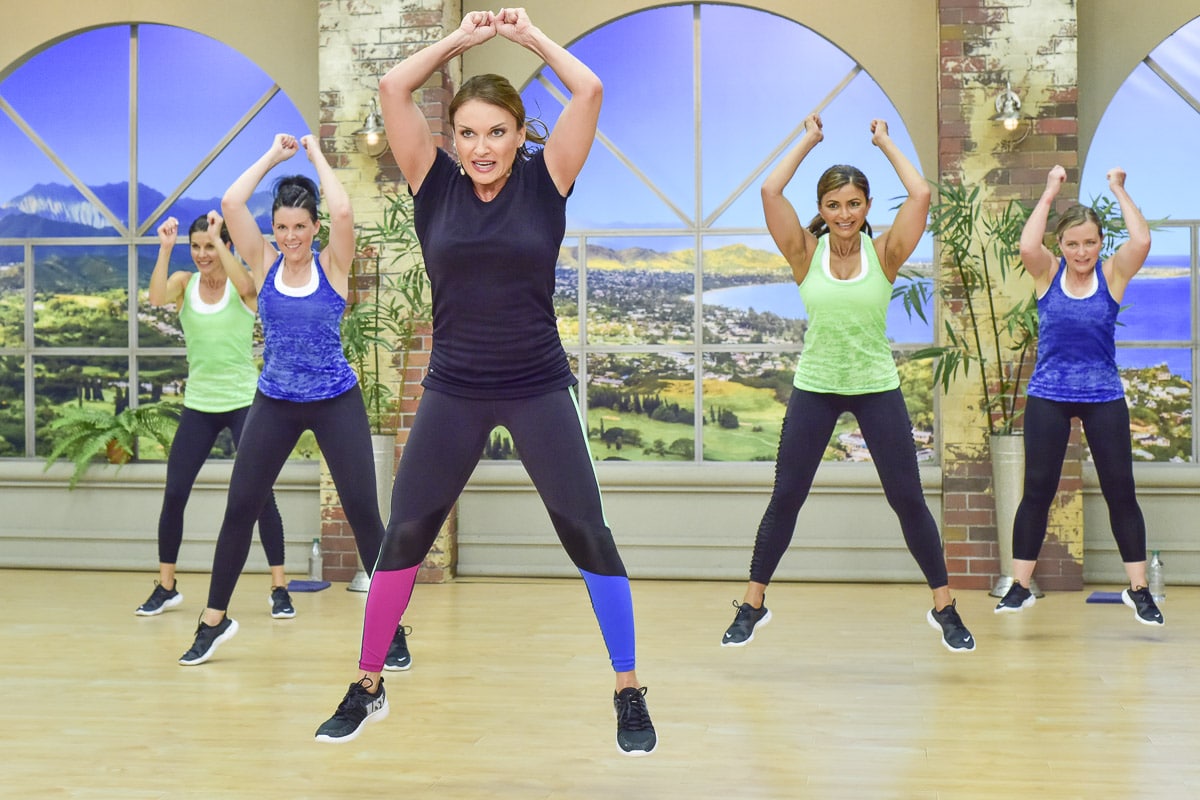

Featured
What Sport Uses Interval Training
Modified: August 21, 2023
Looking for a sport that incorporates interval training? Discover the featured sport that will challenge your fitness levels and improve your endurance.
Introduction
Interval training is a popular and effective workout method that involves alternating between intense bursts of activity and periods of rest or lower intensity exercise. It has gained recognition for its ability to improve cardiovascular fitness, increase endurance, and enhance overall athletic performance. Many athletes and sports enthusiasts have incorporated interval training into their routines to maximize their training efforts and achieve their fitness goals.
In this article, we will explore the concept of interval training, its benefits, and delve into various sports where it is commonly used. Whether you are a professional athlete, a recreational sports enthusiast, or someone looking to improve your fitness level, understanding the role of interval training in different sports can help you optimize your training approach and take your performance to new heights.
Interval training is not a one-size-fits-all approach; it can be tailored to suit individual fitness levels and goals. By incorporating this method into your sports routine, you can challenge your body, increase your stamina, and push your limits while reaping the benefits of improved athletic performance.
So, let’s dive into the world of interval training and discover how it can elevate your performance in various sports.
Definition of Interval Training
Interval training is a form of exercise that involves alternating between periods of high-intensity activity and short periods of rest or less-intense activity. The fundamental idea behind interval training is to push your body to its maximum capacity during the high-intensity intervals, followed by a brief recovery period to allow for partial or complete rest.
Unlike steady-state cardio exercises, where you maintain a constant intensity throughout the workout, interval training challenges your body by switching between intense bursts of energy and moments of active recovery. This variation in intensity triggers various physiological responses in your body, such as increased heart rate, improved oxygen utilization, and enhanced calorie burning.
The duration and intensity of the intervals can vary depending on your fitness level, goals, and the specific sport or activity you are training for. High-intensity intervals typically range from 10 seconds to several minutes, followed by a shorter rest or recovery period. The number of intervals performed during a session may also vary, with beginners starting with a smaller number and gradually increasing over time.
Interval training can be structured in different ways. One common method is the Tabata protocol, which involves performing exercises at maximum effort for 20 seconds, followed by 10 seconds of rest, repeated for a total of four minutes. Another popular approach is the 2:1 ratio, where you perform high-intensity intervals for twice the duration of the recovery period.
By incorporating interval training into your fitness routine, you can efficiently improve your cardiovascular endurance, boost your metabolism, and enhance your overall fitness level. It can be adapted to various forms of exercise, including running, cycling, swimming, and even team sports.
Benefits of Interval Training
Interval training offers a wide range of benefits for athletes and fitness enthusiasts. Let’s explore some of the key advantages of incorporating interval training into your sports routine:
- Improved cardiovascular fitness: Interval training pushes your heart rate to higher levels, challenging your cardiovascular system. This helps increase your aerobic and anaerobic capacity, leading to improved overall cardiovascular fitness.
- Increased calorie burn: The high-intensity intervals in interval training stimulate your metabolism, resulting in a greater calorie burn during and after the workout. This can be beneficial for weight loss and weight management goals.
- Enhanced endurance: By pushing your body to perform at high intensity for short periods, interval training helps improve your stamina and endurance. This is especially valuable for endurance sports such as running, cycling, and swimming.
- Efficient use of time: Interval training allows you to achieve maximum benefits in a shorter amount of time compared to traditional steady-state cardio workouts. This is ideal for individuals with busy schedules who are looking for effective and time-efficient training methods.
- Muscle strength and power: The explosive bursts of high-intensity exercise in interval training stimulate muscle fibers, leading to improvements in muscle strength and power. This can benefit sports that require quick bursts of speed and agility, such as basketball, soccer, and tennis.
- Mental toughness: Interval training challenges you both physically and mentally. The ability to push through intense intervals and overcome fatigue can enhance mental resilience, determination, and focus, which can be valuable in competitive sports.
- Variety and enjoyment: Interval training offers a dynamic and varied workout experience that can help prevent boredom and maintain motivation. The constantly changing intensity levels and varied exercises make each session exciting and engaging.
These are just a few of the many benefits of interval training. Whether you are an athlete aiming to improve performance, a fitness enthusiast seeking effective workouts, or someone looking to reap the health benefits of exercise, incorporating interval training into your routine can help you achieve your goals more efficiently and effectively.
Sports That Use Interval Training
Interval training is a versatile workout method that can be incorporated into a wide range of sports and athletic pursuits. Many sports and activities rely on bursts of intense effort followed by periods of active recovery or rest. Here are some sports where interval training is commonly used:
- Running: Distance runners often incorporate interval training into their routine to improve speed, endurance, and race performance. Intervals can vary from short sprints to longer tempo runs, helping runners develop both speed and stamina.
- Cycling: Whether it’s road cycling, mountain biking, or indoor cycling, interval training plays a crucial role in improving power output and endurance. Cyclists perform high-intensity intervals to simulate race conditions and simulate hill climbs.
- Swimming: In swimming, interval training is used to increase speed, build stamina, and improve stroke efficiency. Short bursts of intense swimming followed by recovery periods allow swimmers to push their limits and improve their overall performance.
- Team Sports: Many team sports such as soccer, basketball, and hockey involve frequent bursts of intense activity followed by moments of rest or lower intensity. Interval training helps athletes in these sports develop their speed, agility, and anaerobic fitness.
- Tennis: Tennis requires quick sprints, explosive movements, and rapid change of direction. Interval training can help tennis players improve their agility, reaction speed, and recoverability between points.
- High-Intensity Interval Training (HIIT) workouts: While not a specific sport, HIIT workouts have gained popularity as a time-efficient and effective approach to overall fitness. HIIT workouts consist of intense intervals of exercise, targeting various muscle groups and cardiovascular fitness.
These are just a few examples, but interval training can be incorporated into nearly any sport or activity that demands both bursts of high-intensity effort and periods of active recovery. The specific intervals, duration, and intensity will vary based on the sport, the athlete’s fitness level, and their training goals.
By integrating interval training into your chosen sport or physical activity, you can optimize your performance, boost your endurance, and take your skills to the next level.
Examples of Interval Training in Different Sports
Interval training can take various forms depending on the sport or activity. Let’s take a look at some examples of how interval training is used in different sports:
- Running: Runners often incorporate interval training into their workout routine. An example of an interval training session for runners could be a series of 400-meter sprints followed by a recovery jog, repeated for a total of 5-8 sets. This helps improve speed, endurance, and aerobic capacity.
- Cycling: Cyclists utilize interval training to improve their power output and stamina. For example, a cyclist might perform a set of 30-second all-out sprints, followed by 1-2 minutes of easy pedaling for recovery, repeated for 5-6 sets. This simulates the demands of both sprinting and endurance efforts in a race.
- Swimming: Swimmers incorporate interval training to build speed and endurance. A swimmer could perform a set of 100-meter freestyle sprints at maximum effort, followed by 20-30 seconds of rest, repeated for multiple sets. Interval distances and rest periods can be adjusted based on the swimmer’s skill level and training goals.
- Team Sports: Interval training is commonly used in team sports such as soccer and basketball. Players engage in drills that involve high-intensity actions like sprints, jumps, and quick changes of direction followed by brief recovery periods. This helps mimic the demands of the game and improves overall fitness and performance on the field.
- Tennis: In tennis, players can incorporate interval training by performing high-intensity drills such as sprints to the net, lateral movement exercises, and rapid hitting sequences, followed by short rest periods. This helps improve speed, agility, and on-court endurance.
- High-Intensity Interval Training (HIIT) workouts: HIIT workouts often involve combining various exercises such as burpees, squats, push-ups, and jumping jacks into intense intervals, followed by short rest periods. This type of training improves cardiovascular fitness, burns calories, and increases overall strength and endurance.
These are just a few examples, but the beauty of interval training is its versatility. Regardless of the sport or activity, interval training can be tailored to the specific requirements and goals of the individual athlete. Whether you are training for speed, endurance, power, or overall fitness, interval training can be customized to suit your needs.
Remember to consult with a qualified fitness professional or coach to design an interval training program that aligns with your skill level, fitness goals, and the demands of your chosen sport.
How to Incorporate Interval Training into Your Sports Routine
If you’re looking to integrate interval training into your sports routine, consider the following steps to help you get started:
- Assess your fitness level: Before incorporating interval training, it’s important to assess your current fitness level. This will help you determine the appropriate intensity and duration of your intervals.
- Set clear goals: Define your goals for incorporating interval training. Whether it’s improving speed, endurance, or overall performance, having specific goals in mind will help drive your training efforts.
- Select appropriate exercises: Choose exercises that are relevant to your sport. For example, runners might include sprints, cyclists might opt for hill repeats, and basketball players might incorporate agility drills.
- Plan your intervals: Determine the duration and intensity of your intervals. Start with shorter intervals with longer rest periods if you’re a beginner and gradually progress to longer intervals with shorter rest periods as you become more conditioned.
- Warm up and cool down: Prior to starting your interval training session, make sure to warm up with dynamic stretches and low-intensity activities. Similarly, cool down with static stretches and gentle movements to help your muscles recover.
- Monitor your rest periods: Rest periods are essential for recovery and allowing your body to adapt to the high-intensity intervals. Use a timer or a stopwatch to ensure that your rest periods are consistent.
- Gradually increase intensity and volume: As your fitness level improves, gradually increase the intensity or duration of your intervals and the overall volume of your training. This will help you continue to challenge your body and make progress.
- Listen to your body: Pay attention to how your body responds to interval training. If you experience pain or excessive fatigue, consider modifying your workouts or seeking guidance from a qualified professional.
- Maintain balance and recovery: It’s important to strike a balance between interval training and rest days. Allow your body ample time to recover and adapt to the high-intensity training sessions.
- Track your progress: Keep a record of your interval training sessions, noting the duration, intensity, and any modifications. This will help you track your progress over time and identify areas for improvement.
Remember, interval training should be tailored to your specific needs, fitness level, and sport. It’s always advisable to consult with a qualified fitness professional or coach who can help design a personalized interval training program that aligns with your goals and ensures safety and effectiveness.
Conclusion
Interval training is a powerful and versatile method that can significantly enhance your sports performance and overall fitness. By incorporating interval training into your sports routine, you can improve cardiovascular endurance, increase speed and power, boost stamina, and optimize your training efforts.
Whether you’re a runner looking to improve your race times, a cyclist striving for greater power output, or a team sport player aiming to enhance your agility and performance on the field, interval training can be tailored to your specific sport and goals.
Remember to start gradually and listen to your body, gradually increasing the intensity and duration of your intervals over time. It’s crucial to maintain a balance between training and recovery to prevent overexertion and injuries.
Interval training offers a variety of benefits, including improved cardiovascular fitness, increased calorie burn, enhanced endurance, and mental toughness. It also provides an opportunity to add variety and excitement to your training routine, preventing boredom and maintaining motivation.
Whether you’re a professional athlete or a recreational sports enthusiast, incorporating interval training into your routine can take your fitness and performance to new heights. So, lace up your shoes, hop on your bike, or hit the field, and discover the incredible benefits of interval training in your chosen sport.









